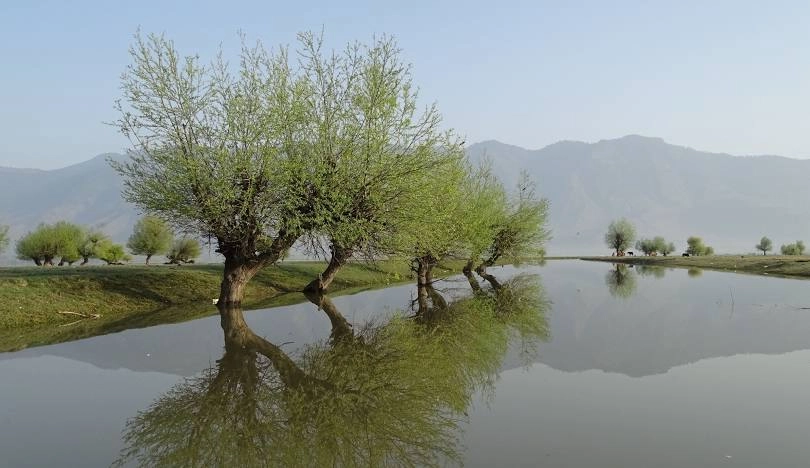Aishmuqam - A Spiritual Heaven
Anantnag
Overview
Aishmuqam is a municipal committee city in the district of Anantnag, Jammu and Kashmir. It is one of the most prominent tourist spots in Anantnag and is located 15 kilometres (9.3 mi) from the town of Anantnag and 77 kilometres (48 mi) from Srinagar on the route to Pahalgam.Aishmuqam is a significant religious and cultural site located on a hillock in Anantnag, Jammu and Kashmir, devoted to Sheikh Zain-ud-Din Wali, a revered Sufi saint. It is well-known for its deep cave shrine, housing relics associated with the saint. The annual "Zool Festival" in April draws numerous devotees for a week-long celebration, highlighted by an evening torchlight procession
Weather
Summer (April to June)
During this time, the weather is pleasant and ideal for tourism, with temperatures ranging from 15°C to 30°C. The clear skies and moderate temperatures make it perfect for pilgrimage and sightseeing. .
Monsoon (July to September)
This period brings moderate rainfall to the region. Although the rainfall is not heavy, it can make the pathways to Aishmuqam slippery and might slightly affect travel plans. .
Autumn (October to November)
This season is marked by cool, refreshing temperatures and the breathtaking beauty of the Chinar trees turning golden. The temperatures hover between 10°C and 20°C, and the weather is dry, making it a wonderful time to visit.
Winter (December to March)
Winters in Aishmuqam can be harsh, with temperatures dropping to as low as -5°C. The region often experiences snowfall, which can cause roadblocks and make the shrine difficult to access.
How to Reach
By Air
The nearest airport is Srinagar, approximately 75 km from Aishmuqam. From there, you can hire a taxi or take a bus. .
By Train
The nearest railway station is Jammu Tawi, around 250 km away. From there, buses and taxis are available.
By Road
The nearest railway station is Jammu Tawi, around 250 km away. From there, buses and taxis are available.
Best time to Visit
Spring (March to May)and autumn (September to November)
The best time to visit Aishmuqam is during the spring (March to May) and autumn (September to November) seasons. The weather is pleasant and ideal for outdoor activities, including the pilgrimage.
History
Aishmuqam, located in the Anantnag district of Jammu and Kashmir, is a revered Sufi shrine dedicated to Sheikh Zain-ud-Din Wali, a prominent disciple of the Sufi saint Sheikh Noor-ud-Din Noorani. The shrine, situated inside a cave, holds immense spiritual significance and was once a place of meditation for Sheikh Zain-ud-Din during the 15th century. The annual Urs festival, celebrated in April, honors his legacy with prayers and the famous torch procession, "Zool." Aishmuqam is deeply tied to Kashmiri folklore, symbolizing the syncretic tradition of Sufism in the region.




























